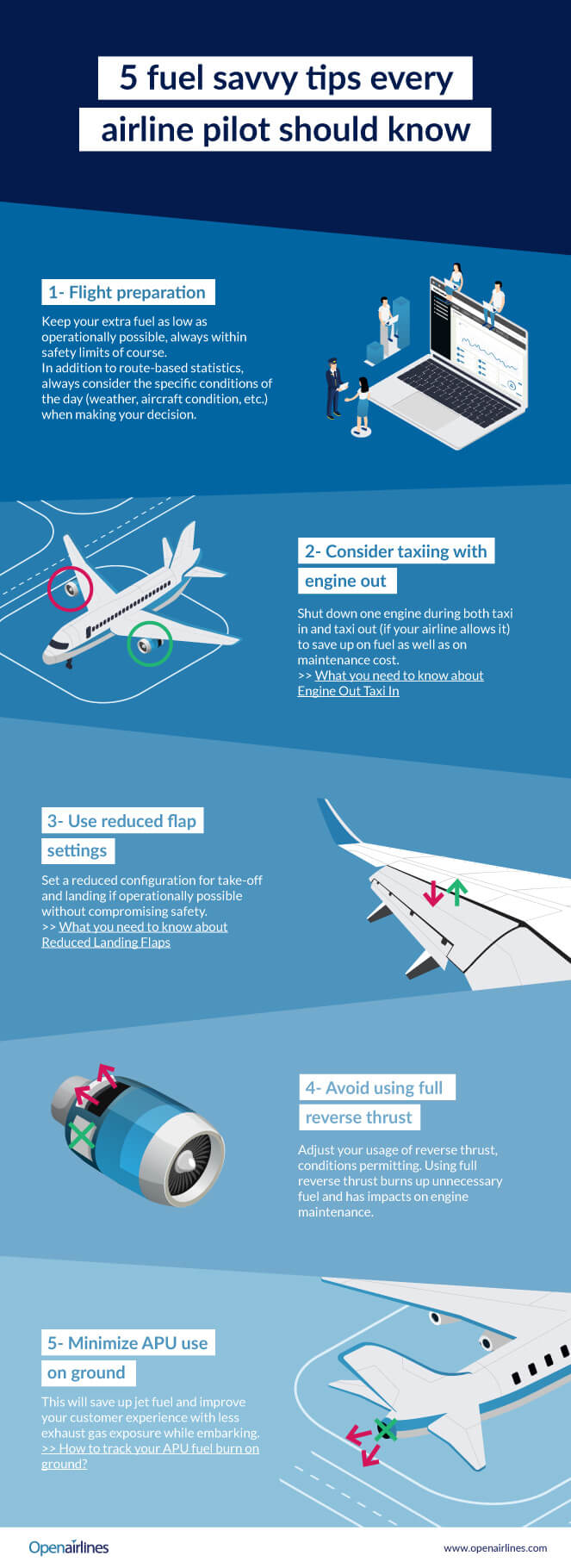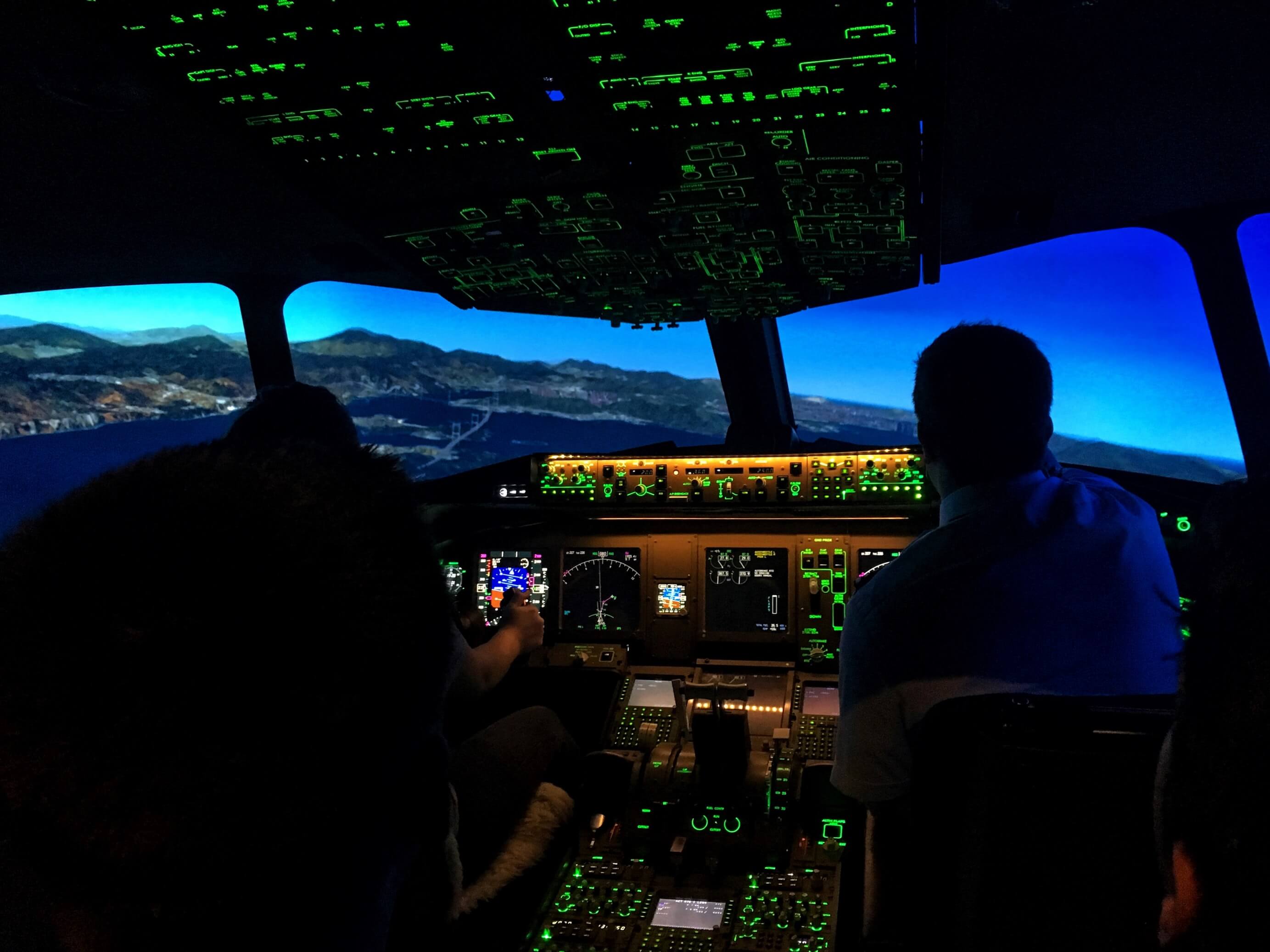5 Fuel-savvy tips every pilot should know

Since summer 2017, jet fuel prices are rising. According to the International Air Transport Association (IATA), in October 2018, jet fuel price was 36% higher than one year ago. This spike in fuel prices, generally airlines’ biggest cost, is quickly eroding carriers’ profits and jeopardizing their development.
The good news is that fuel cost does not just depend on fuel price but also on fuel efficiency.
As a pilot, you can improve fuel efficiency by applying a sum of small tips that have a significant impact on fuel savings.
That’s why we wanted to share with you our Top 5 fuel savvy tips every pilot should know:
1- Flight preparation: Improve your choice of alternate and keep your extra fuel as low as operationally possible, always within safety limits of course. In addition to route-based statistics, always consider the specific conditions of the day (weather, aircraft condition, etc.) when making your decision.
2- Consider taxiing with engine out: Shut down one engine during both taxi in and taxi out (if your airline allows it) to save up on fuel as well as on maintenance cost.
>> What you need to know about Engine Out Taxi In
3- Use reduced flap settings: Considering obstacles, runway length and meteorological conditions, set a reduced configuration for landing if operationally possible without compromising safety.
>> What you need to know about Reduced Landing Flaps
4- Avoid using full reverse thrust: adjust your usage of reverse thrust, conditions permitting. Using full reverse thrust burns up unnecessary fuel and has impacts on engine maintenance: potential debris ingestion and thermal stress put on the engine.
5- Minimize APU use on ground: use the available ground infrastructure instead of the APU to prepare the cabin before a flight. This will save up jet fuel and improve your customer experience with less exhaust gas exposure while embarking.
>> How to track your APU fuel burn on ground?
You can’t improve what you can’t measure
You’re probably thinking that it is not that simple. Indeed, fuel savings best practices are not easy to implement because of airports or weather constraints.
Moreover, even supposing you apply some saving initiatives on each flight, most airlines don’t have the ability to measure them. And without any view on the fuel savings achievements, it is difficult to keep the whole operations team engaged.
Do you know that it is possible to use innovative technologies such as big data to improve fuel efficiency significantly?
Many airlines are already using this type of solution and have achieved a consistent 75%+ application rate on fuel procedures. For example, Francesc Torres (from Cebu Pacific) estimates that the biggest improvement is is that pilots are now self-briefing their own fuel performance and are able to demonstrate the effectiveness of Cebu Pacific fuel policies.
READ MORE
Like what you see? Want to learn more about fuel efficiency?
Discover case studies and stories from airlines that have been there:



